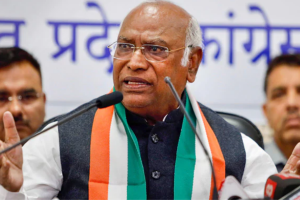Tale of Two Cities: Hampi/Newtown is a photography collection book by Rajib De, an independent photojournalist. The preface to the book is written by Kalyan Ray, professor, writer, and educationist. The book is 130 pages in length, with 118 17”/12” aspect ratio panoramic analogue photographs shot in black and white, as is the signature style of De.
The austere, grandiose site of Hampi was the last capital of the last great Hindu kingdom of Vijayanagar. Its fabulously rich princes built Dravidian temples and palaces, which won the admiration of travellers between the 14th and 16th centuries. Conquered by the Deccan Muslim confederacy in 1565, the city was pillaged over a period of six months before being abandoned. “In its prime, Hampi was three times the size of contemporary Paris and second only to the imperial city of Beijing during the reign of the Ming dynasty at that time,” says Kalyan Ray in the preface. Juxtaposed to this reminiscence is the newborn urban backdrop of Newtown, the ribs of concrete standing on open expanses of fields, cattle and trees. The opening photographs of the book show a series of stone columns, almost resembling Stonehenge, and adjacent are the barbed-wire-divided plain concrete pillars against the backdrop of tall buildings and a growing urbanity on the outskirts of Kolkata. This is what Hampi/Newtown captures.
Advertisement
Somewhere on the visual journey of turning each page of the book, the reader might realise the cycle of creation and destruction is eerily similar; the bones of civilisation and the solitude of urbanity are a coin being flipped perpetually. The two cities are located at two corners of the country, Hampi being in Karnataka and Newtown in Bengal.
De says, “Ruins are not just of the past; ruins are the future. There is an intrinsic sense of diaspora in the book, which brings back a longing for a distant land from the future and the past. Hampi was once a glorious city, the architecture, the planning; it shows what India once was.” Talking about the inception of the idea for this collection, De recollects a distant dusky evening on an AC bus towards Karunamoyee: “I saw a man watching a video of a ruined city, which looked like Greek ruins. On inquiry, he got to know about Hampi and how it had been declared a UNESCO World Heritage site.” He visited Hampi eight times during 2010-2011. The Newtown photos, on the other hand, are as recent as November of 2024.
Going through the book, the viewer might face a conundrum of which picture is of what city; that is how exponentially the history of making/breaking keeps on reverberating like waves of collective memory of urban people.
Kalyan Ray says, “Rajib has created a stream of temporal connectivity just like I show in my literature. Creating a jump cut from the past to the future and how the past influences the future even unknowingly. We talk of three units of time, space and entity. Time and space are not as important as the entity. Andrei Tarkovsky had said photographs are nothing but visible light, and Rajib’s book is just the reflection of that.”
The whole book is a journey with a middle oasis of a quote from Buddha, “The trouble is, you think you have time.” It is so essential to the book; the reader might be brought back to reality after the trance-like flipping of pages after pages of panoramic time capsules. There are pictures of shrines, contrasted with solitary trees against the mighty concrete socialist architecture; there are also rocks balanced precariously against the juxtaposition of cows sitting out of place near ponds.
Ray says, “A picture does not need to speak a thousand words because it is predominantly visual.” The book justifies the words. De says, “Nothing is permanent.” The book does show what Percy Bysshe Shelley had written about the great king Ozymandias, “Look on my Works, ye Mighty, and despair!” The book ends with the collage of all the pictures on one page. The transient sense of drowning into the sands of time plunges the environ into a Promethean mindscape of despair and hopefulness of the circle of change.
Spotlight:
Tale of two cities: Hampi/Newtown
By Rajib De and Kalyan Ray
Bluetree, 2025
130 pages, Rs 4,000/-











